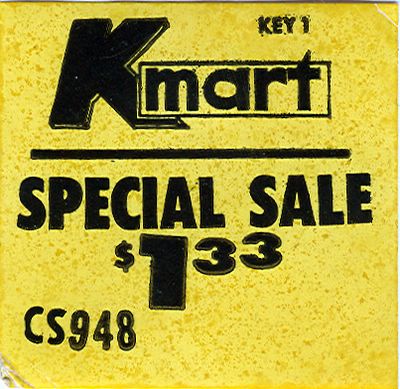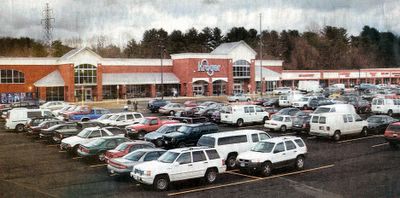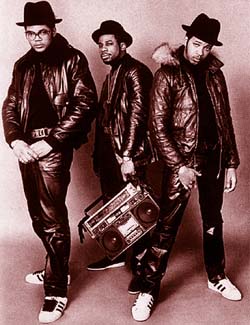By ANDREW ROSS SORKIN and TRACIE ROZHON Federated Department Stores, which owns
Macy's and Bloomingdale's, agreed yesterday to buy
May Department Stores, which owns Lord & Taylor and Marshall Field's, for about $11 billion, executives involved in the negotiations said.
The deal, which is expected to be announced today, would transform Federated, already the nation's largest department store company, into a retailing giant with more than 1,000 stores and $30 billion in sales.
As big as the combined company will be, however, its sales will be far exceeded by the discount retailing juggernaut
Wal-Mart, which had sales of $262 billion last year.
The transaction is the latest retail merger in an industry that is rapidly being redrawn as the traditional department store faces mounting pressure from rivals on all sides: discount giants like Wal-Mart and Target, specialty stores like Gap and Victoria's Secret and upscale retailers like
Neiman Marcus and Nordstrom.
Late last year, two other famous names in retailing, Kmart and
Sears, Roebuck & Company, agreed to merge in an $11 billion deal.
Some retail and fashion executives lament that such consolidation has left the industry devoid of department stores that were once landmarks, like Gimbels in New York, Bullock's in Los Angeles and Wanamaker's in Philadelphia.
Lost too, the executives suggest, are the industry's personal touches, like its "merchant princes" - buyers for department stores who traveled the country spotting the Ralph Laurens and Calvin Kleins before they were household names. And even more retail mergers may be in the making.
Wall Street analysts and fashion industry specialists have been buzzing in recent weeks about the deal prospects for Saks Fifth Avenue and Neiman Marcus. Fortunoff and Barney's were sold last year.
Federated's deal with May is a long time in the making. Two and half years ago, the companies held talks but failed to reach an agreement after a dispute over which executives would run the combined company. Last month, May's chief executive, Gene Kahn, was ousted by the company's board, which created an opening for Federated to resume negotiations.
The companies have been negotiating off and on for several weeks, the executives said, and a deal was approved by both company boards over the weekend.
The deal is subject to approval by regulators, who are not expected to block the transaction, but may press Federated to sell stores in cities in which it has a stronghold.
Analysts predict that Federated, based in Cincinnati, will probably close a significant number of May's underperforming locations, perhaps as many as 200 stores. Federated may also give the Macy's name to many of May's regional stores, discarding the familiar names that have been known to generations of shoppers in those areas. Besides Lord & Taylor and Marshall Field's, which are likely to go untouched, May owns Famous-Barr, Filene's, Foley's, Hecht's, Kaufmann's, Meier & Frank, Robinsons-May and Strawbridge's, among others.
"Together, using the Macy's name, a powerful national franchise could be established," Bernard Sosnick, an analyst at Oppenheimer & Company recently wrote in a note to investors. "This, we believe, is the compelling force behind a possible merger between the two, along with cost reductions due to the elimination of redundant activities."
Thousands of layoffs are also expected, although other merchants, including
Kohl's,
J.C. Penney and Nordstrom, are reportedly already lining up to take over some of the locations that Federated may jettison.
May, which is based in St. Louis, is expected to keep some offices there, but there will be layoffs.
Spokeswomen for Federated and May declined to comment.
Some analysts worry that the deal is marrying two companies facing critical challenges. "There may be back-office synergies," Joshua R. Goldberg, a managing director of Mercantile Capital Partners, a private equity firm in Manhattan, said last week. "But will a combined May-Federated be more attractive and effective with customers than each is now?"
Still, Terry J. Lundgren, Federated's chief executive, has received high marks for being a disciplined executive, refusing to overpay for acquisitions. When Marshall Field's came up for sale in the last year, he walked away and let May buy it when he thought the asking price had become too high.
And in his negotiations to buy May, Mr. Lundgren was similarly tough. While May's board had been holding out for more than $40 a share, he was able to talk them into selling for $35.50 a share in cash and stock, executives involved the process said. Shares of May closed on Friday at $35.35. When Mr. Kahn stepped down, before speculation began swirling about talks with Federated, May's shares traded at $27.84. Federated is also expected to assume about $6 billion in debt. May was in a tough position, analysts say, but there no other natural buyers.
Same-store sales for Federated grew by 2.6% last year. May, which has not had sales growth for four years, had a same-store sales loss of 2.4% last year.
In acquiring May, Federated will have to decide how May's 501 department stores and more than 700 specialty stores like the David's Bridal chain will fit into the merged company.
The new company is expected to wring hundreds of millions of dollars in savings, which Mr. Lundgren is expected to outline today.
Mr. Lundgren has been praised marks for imposing an innovative streamlining on his 458-store chain since he took over the company two years ago.
He is pushing to increase the amount of creative private-label fashions, a way to allow stores to differentiate themselves from other chains and discount stores.
The Federated consolidation began in 1929, with the combination of Abraham & Straus; Filene's; F&R Lazarus of Columbus, Ohio; and Bloomingdale's of New York City. Federated, in its fact book, said it created the idea of "pay as you can" credit policies, as well as grouping clothes by size as opposed to color, brand or price.By 1964, Federated had combined 14 store chains. In the 1970's, it began developing shopping centers, bought Rich's and built a new headquarters in Cincinnati.
But the 1980's brought trouble: Robert Campeau, a Canadian real estate developer, in a highly leveraged takeover, laid claim to Federated in 1988 and two years later, the company went bankrupt, emerging in 1992 as a public company. Two years later, it bought Macy's, a triumph, and Fingerhut, a dismal and very public failure.
The year after Mr. Lundgren became chief executive in 2002, he began adding the Macy's name to its regional store chains, creating Bon-Macy's, Burdines-Macy's, Goldsmith's-Macy's, Lazarus-Macy's and Rich's-Macy's.
The next year, after what he said was extensive customer polling, he decided to remove the old names, and Federated began concentrating on its two marquee names: Macy's and Bloomingdale's.
Besides Marshall Field's in Chicago, which Federated has coveted for years, the company will acquire valuable Robinson-May locations on the West Coast and Foley's locations in Texas. Lord & Taylor, particularly, will be closely watched. Jane Elfers, its chief executive, is in the midst of a turnaround, and has closeda third of her stores to concentrate on sales and profits at the rest.
Ms. Elfers has been mentioned as a successor to Mr. Kahn, the recently ousted May chief executive.
Yet by the weekend, new speculation surfaced that Nordstrom had put in a request for Lord & Taylor's grand Fifth Avenue flagship.
To pay for the acquisition, most retailing specialists say Mr. Lundgren will sell one or both of the company's credit card operations. Over the weekend, they also were speculating that Mr. Lundgren was likely to shed David's Bridal, the successful wedding apparel chain. May also owns After Hours Formalwear and Priscilla's of Boston, an upscale wedding gown retailer.




















